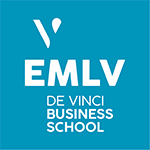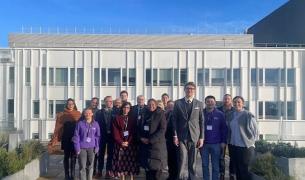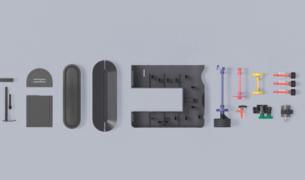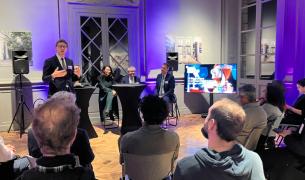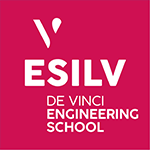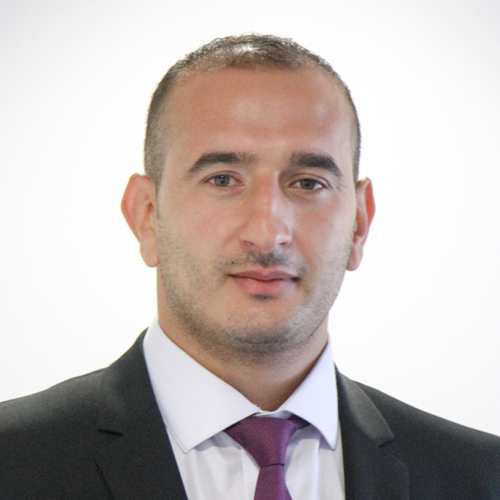Kheireddine Kadri; Achraf Kallel; Guillaume Guérard; Abir Ben Abdallah; Sebastien Ballut; Joseph Fitoussi; Mohammadali Shirinbayani
Prediction of Ductile Damage in Composite Material Used in Type IV Hydrogen Tanks by Artificial Neural Network and Machine Learning with Finite Element Modeling Approach Article de journal
Dans: Energy Technology, 2024.
@article{kadri_3256,
title = {Prediction of Ductile Damage in Composite Material Used in Type IV Hydrogen Tanks by Artificial Neural Network and Machine Learning with Finite Element Modeling Approach},
author = {Kheireddine Kadri and Achraf Kallel and Guillaume Guérard and Abir Ben Abdallah and Sebastien Ballut and Joseph Fitoussi and Mohammadali Shirinbayani},
url = {https://onlinelibrary.wiley.com/doi/10.1002/ente.202401045},
year = {2024},
date = {2024-10-01},
journal = {Energy Technology},
abstract = {This study investigates the degradation process of composite materials used in high-pressure hydrogen storage vessels by employing advanced computational techniques. A recurrent neural network, specifically a bidirectional long short-term memory (Bi-LSTM) network, is utilized to predict the temporal evolution of ductile damage. The key degradation features are extracted from finite element modeling (FEM) computations using group method of data handling algorithms and treated as time-series data. Results demonstrate that the Bi-LSTM network can accurately undergo both elastic and plastic behaviors of the composite under tensile strength. Additionally, traditional machine learning (ML) algorithms such as extreme gradient boosting and random forest are employed to forecast strain degradation, showing promising results. This hybrid approach combining FEM, ML, and deep learning provides a comprehensive method for predicting the degradation of composite materials, offering significant potential for optimizing the design and durability of hydrogen storage vessels.},
keywords = {},
pubstate = {online},
tppubtype = {article}
}
Kheireddine Kadri; Achraf Kallel; Guillaume Guérard; Abir Ben Abdallah; Joseph Fitoussi; Sebastien Ballut; Mohammadali Shirinbayani
Study of composite polymer degradation for high pressure hydrogen vessel by machine learning approach Article de journal
Dans: Energy Storage, vol. 6, no. 4, p. e645, 2024.
@article{kadri_3073,
title = {Study of composite polymer degradation for high pressure hydrogen vessel by machine learning approach},
author = {Kheireddine Kadri and Achraf Kallel and Guillaume Guérard and Abir Ben Abdallah and Joseph Fitoussi and Sebastien Ballut and Mohammadali Shirinbayani},
url = {https://doi.org/10.1002/est2.645},
year = {2024},
date = {2024-06-01},
journal = {Energy Storage},
volume = {6},
number = {4},
pages = {e645},
abstract = {The aim of this paper is to study the degradation of a composite material under static pressure. The high pressure condition is similar to the one encountered inside hydrogen tanks. Damage modeling was used to evaluate the behavior of hydrogen tanks to high pressure. A practical approach, coupling a finite element method (FEM) simulation and machine learning algorithm (ML), is suggested. The representative volume element (RVE) was used in association with a choice of a behavior law and a damage law as an input data. Algorithms for ML classification such as K-nearest neighbors (k-NN) and a special k-NN with a dynamic time warping (DTW) metric were used. The hierarchical clustering through dendrograms visualizations allowed to exhibit the impact of composite parameters in relation to fiber, matrix properties and fiber volume fraction on the strain degradation under external static pressure. Continuing this, the optimum RVE which shows a low degradation value will be exhibited.},
note = {Scimagojr Q3 en Energy},
keywords = {},
pubstate = {published},
tppubtype = {article}
}
Houda BARHOUMI; Marie Carole Kouassi; Achraf Kallel
Numerical Study of Doxorubicin transdermal delivery for breast cancer treatment using Microneedles Article de journal
Dans: International Journal For Numerical Methods In Biomedical Engineering, vol. 40, no. 5, p. e3812, 2024.
@article{barhoumi_2861,
title = {Numerical Study of Doxorubicin transdermal delivery for breast cancer treatment using Microneedles},
author = {Houda BARHOUMI and Marie Carole Kouassi and Achraf Kallel},
url = {https://onlinelibrary.wiley.com/doi/10.1002/cnm.3812},
year = {2024},
date = {2024-05-01},
journal = {International Journal For Numerical Methods In Biomedical Engineering},
volume = {40},
number = {5},
pages = {e3812},
abstract = {The lack of in vivo studies on the delivery of doxorubicin within human skin,
especially the absence of data on the doxorubicin diffusion coefficient, has
made understanding its transdermal delivery kinetics challenging. In this
study, as a first step, governing equations and finite element methods were
employed to reproduce Franz diffusion cell experiment in human cadaver skin.
The application of this experiment representative model with a fitting method
resulted in approximate values for the diffusivity of doxorubicin across various
skin layers. The estimated values were used later to conduct a comprehensive
examination of doxorubicin administration for breast tumor treatments. In a
2D axisymmetric model using Fick's Law and then a microneedles array 3D
model, crucial parameters effects on delivery efficiency were examined, such
as the microneedle tip diameter, tip-to-tip distance, and tumor depth. As
highlighted by the findings of this study, these parameters have an impact on
the effectiveness of doxorubicin delivery for treating breast tumors. The focus
of this research is on the potential of numerical methods in biomedical engineering,
which addresses the urgent need for data on doxorubicin diffusion in
human skin and offers valuable insights into optimizing drug delivery strategies
for enhanced therapeutic outcomes.},
keywords = {},
pubstate = {published},
tppubtype = {article}
}
Joseph Fitoussi; Samia Nouira; Khaled Benfriha; Mohamed Amine Laribi; Achraf Kallel; Robert Tie Bi; Mohammadali Shirinbayani
Investigation of manufacturing process effects on microstructure and fatigue prediction in composite automotive tailgate design Article de journal
Dans: International Journal Of Advanced Manufacturing Technology, vol. 130, no. 7, p. 4295-4310, 2024.
@article{fitoussi_2701,
title = {Investigation of manufacturing process effects on microstructure and fatigue prediction in composite automotive tailgate design},
author = {Joseph Fitoussi and Samia Nouira and Khaled Benfriha and Mohamed Amine Laribi and Achraf Kallel and Robert Tie Bi and Mohammadali Shirinbayani},
url = {https://trebuchet.public.springernature.app/get_content/0b23264d-b090-4fd4-8009-ed9d9111d672?utm_source=rct_congratemailt&utm_medium=email&utm_campaign=nonoa_20240116&utm_content=10.1007/s00170-024-12988-z},
year = {2024},
date = {2024-01-01},
journal = {International Journal Of Advanced Manufacturing Technology},
volume = {130},
number = {7},
pages = {4295-4310},
abstract = {Manufacturing processes signifcantly infuence microstructural variations in short fber reinforced composites, which afect
damage characteristics and fatigue life. Accurate fatigue life prediction is critical, especially when considering the impact
of these manufacturing induced microstructural nuances. In this study, we investigate how manufacturing processes shape
microstructures and their impact on fatigue life prediction. We present an advanced micromechanical model for predicting
fatigue life in tangible structures, considering the microstructure distribution infuenced by manufacturing dynamics. Our
model links damage from monotonic loading to fatigue life, resulting in a multi-scale fatigue prediction model. This approach
builds a database revealing the interaction between Tsai-Wu failure criterion parameters, manufacturing-induced microstructural variations, and target fatigue life. Using these insights, we fne-tune material properties in fnite element simulations for
precise design optimization. We illustrate our method using an automotive tailgate made from a sheet molding compound.
This research highlights the critical role of manufacturing processes in microstructure variation and fatigue life prediction.
It ofers the potential for signifcant vehicle weight reduction, energy savings, and reduced emissions in automotive design
and promises to be a valuable tool for optimizing manufacturing process parameters.},
keywords = {},
pubstate = {published},
tppubtype = {article}
}
Mohammadali Shirinbayani; Abbasnezhad Navideh; Mohammad Hossein Nikooharf; Khaled Benfriha; Achraf Kallel; Jendli Zouhaier; Joseph Fitoussi
Manufacturing Process Effect on the Mechanical Properties of Glass Fiber/Polypropylene Composite Under High Strain Rate Loading: Woven (W?GF?PP) and Compressed GF50?PP Article de journal
Dans: Applied Composite Materials, vol. 30, p. 1717-1736, 2023.
@article{shirinbayani_2367,
title = {Manufacturing Process Effect on the Mechanical Properties of Glass Fiber/Polypropylene Composite Under High Strain Rate Loading: Woven (W?GF?PP) and Compressed GF50?PP},
author = {Mohammadali Shirinbayani and Abbasnezhad Navideh and Mohammad Hossein Nikooharf and Khaled Benfriha and Achraf Kallel and Jendli Zouhaier and Joseph Fitoussi},
url = {https://link.springer.com/article/10.1007/s10443-023-10143-7},
year = {2023},
date = {2023-12-01},
journal = {Applied Composite Materials},
volume = {30},
pages = {1717-1736},
abstract = {Long glass fiber thermoplastic laminates have garnered significant attention for their potential use in designing structural parts across various sectors, including automotive, aerospace, and petroleum. The growing demand for lightweight and reliable materials in hydrogen vessel reservoirs, intended for future vehicles, necessitates understanding the fast dynamic behavior (crash) of these materials for effective structural design in such applications.
This study presents an optimized approach for experimentally characterizing the overall dynamic mechanical behavior of Twill woven glass fiber reinforced polypropylene (W-GF-PP) laminates. The methodology focuses on reporting the strain rate effect on the
material response while attempting to isolate the inherent inertial disturbances in the specimen attributed to the test system. Tensile tests have been conducted until the specimen's total failure for three specific relative orientations of fiber: 0°, 90°, and ± 45°. The tests
span a strain rate range from quasi-static (10-4 s?1) up to 2000 mm?s?1 (approximately 160 s?1, depending on the specimen's actual response). The material's behavior appears sensitive, particularly for the ± 45° fiber orientation. The study also examines the impact of
the manufacturing process type on the dynamic behavior of the reinforced polypropylene.},
keywords = {},
pubstate = {published},
tppubtype = {article}
}
Joseph Fitoussi; Mohammad Hossein Nikooharf; Achraf Kallel; Mohammadali Shirinbayani
Dans: Applied Composite Materials, vol. 29, no. 3, p. 1-21, 2022.
@article{fitoussi_1864,
title = {Mechanical Properties and Damage Behavior of Polypropylene Composite (GF50-PP) Plate Fabricated by Thermocompression Process Under High Strain Rate Loading at Room and Cryogenic Temperatures},
author = {Joseph Fitoussi and Mohammad Hossein Nikooharf and Achraf Kallel and Mohammadali Shirinbayani},
url = {https://link.springer.com/article/10.1007/s10443-022-10047-y},
year = {2022},
date = {2022-07-01},
journal = {Applied Composite Materials},
volume = {29},
number = {3},
pages = {1-21},
abstract = {This paper concerns the coupling effect of strain rate and temperature on the damage mechanical properties of the long-glass-fiber-reinforced polypropylene (GF50-PP) composite produced by the thermocompression process. Composite plates of GF50-PP have been employed to study the effect of glass fiber distribution on the mechanical properties of the composites. To achieve this objective the tensile tests have been performed at strain rate range from quasi-static to 100 s?1 at two loading temperatures of 20 °C and -70 °C, while measuring the local deformation through a contactless technique using a high-speed camera. High strain rate tensile tests findings showed that GF50-PP behavior is strongly strain-rate dependent. For instance, the stress damage threshold for three fiber orientations of 0°, 45°, and 90° to the Mold Flow Direction (MFD) was increased, when the strain rate varies from quasi-static (0.001 s?1) to 100 s?1 at two loading temperatures of 20 °C and -70 °C. The experimental methodology was coupled to microscopic observations using SEM to study the damage mechanisms of GF50-PP. The analysis confirms that there are three damage mechanisms: fiber-matrix interface debonding, matrix breakage, and pseudo-delamination between neighboring bundles of fibers.},
keywords = {},
pubstate = {published},
tppubtype = {article}
}
Abir Ben Abdallah; Achraf Kallel; Abbas Tcharkhtchi; Tarek Hassine; Fehmi Gamaoun
Modeling of viscoelastic behavior of a shape memory polymer blend Article de journal
Dans: Journal Of Applied Polymer Science, vol. 139, no. 13, p. 51859, 2022.
@article{ben_abdallah_1721,
title = {Modeling of viscoelastic behavior of a shape memory polymer blend},
author = {Abir Ben Abdallah and Achraf Kallel and Abbas Tcharkhtchi and Tarek Hassine and Fehmi Gamaoun},
url = {https://onlinelibrary.wiley.com/doi/10.1002/app.51859},
year = {2022},
date = {2022-05-01},
journal = {Journal Of Applied Polymer Science},
volume = {139},
number = {13},
pages = {51859},
abstract = {Shape memory effect (SME) of polymers is a property that concerns both,
macroscopic and microscopic changes. The variation of internal polymer
properties such, as molecular weight (Mw), rigidity, and viscoelasticity could
alter its SME. In this study, a bi-parabolic model with six parameters is used to
describe the viscoelastic behavior of a shape memory polymer (SMP) blend
(40% poly(caprolactone), PCL/60% Styrene-Butadiene-Styrene) with different
PCL Mw. These parameters are determined using the Cole-Cole method.
Modeling curves (E00 = f (E0)) will be then compared to experimental data from
dynamical mechanical analysis (DMA) tests. It is shown that the bi-parabolic
model predicts well the behavior of the SMP mixture for different Mw of PCL.
Afterwards, the evolution of the model parameters with the Mw of PCL is
investigated. It is revealed that, when Mw of PCL drops, the relaxation modulus
E0 increases. This result proves that the rigidity of the SMP blend rises with
Mw declines.},
keywords = {},
pubstate = {published},
tppubtype = {article}
}
Achraf Kallel; Abir Ben Abdallah; Fehmi Gamaoun; Abbas Tcharkhtchi; Hachmi BenDaly; Joseph Fitoussi
Driving force for shape memory effect of polymers Article de journal
Dans: Journal Of Polymer Research, vol. 28, no. 10, p. 308, 2021.
@article{kallel_1585,
title = {Driving force for shape memory effect of polymers},
author = {Achraf Kallel and Abir Ben Abdallah and Fehmi Gamaoun and Abbas Tcharkhtchi and Hachmi BenDaly and Joseph Fitoussi},
url = {https://link.springer.com/article/10.1007/s10965-021-02637-4},
year = {2021},
date = {2021-07-01},
journal = {Journal Of Polymer Research},
volume = {28},
number = {10},
pages = {308},
abstract = {In this study, we aim to evaluate the shape memory effect of a Poly (Caprolactone) (PCL) (40%) and a Styrene-Butadiene-Styrene (SBS) (60%) blend. Shape memory cycle tests are performed at different temperatures to detect the best recovery rate. Under appropriate temperature, the blend recovers substantially its original shape. To study the recovery rate evolution, multi cycle tests are realized with controlled temperature. The results indicate that the shape memory effect growths when the number of cycle increases. The stored energy acts as a driving force to bring the polymer to its permanent shape after each loading cycle. Then, an original method is proposed to measure the stress-strain evolution during the recovery. With a variable temperature, no standard test can follow the stress-strain evolution. This test is needed to validate the behavior model.},
keywords = {},
pubstate = {published},
tppubtype = {article}
}
Abir Ben Abdallah; Fehmi Gamaoun; Achraf Kallel; Abbas Tcharkhtchi
Molecular weight influence on shape memory effect of shape memory polymer blend ( poly(caprolactone)/styrene-butadiene-styrene ) Article de journal
Dans: Journal Of Applied Polymer Science, vol. 138, no. 5, p. 49761, 2021.
@article{ben_abdallah_1269,
title = {Molecular weight influence on shape memory effect of shape memory polymer blend ( poly(caprolactone)/styrene-butadiene-styrene )},
author = {Abir Ben Abdallah and Fehmi Gamaoun and Achraf Kallel and Abbas Tcharkhtchi},
url = {https://onlinelibrary.wiley.com/doi/10.1002/app.49761},
year = {2021},
date = {2021-02-01},
journal = {Journal Of Applied Polymer Science},
volume = {138},
number = {5},
pages = {49761},
abstract = {The shape memory effect (SME) does not only concern the macroscopic structure. It concerns also the polymer structure at morphological, macromolecular, and molecular scales. This effect may depend on different physicochemical properties like morphology heterogeneity, chain rigidity, steric hindrance, chain polarity, free volume, cross-linking or entanglement density, molecular shape and weight, and so on. Hence, finding the relationship between the SME and these properties is very important. This can help to obtain the knowledge about the phenomenon origin and mechanism. One of the basic polymer properties, which can have direct SME, may be the molecular weight (Mw). The question here is: If the Mw of a shape memory polymer (SMP) changes, for different reasons like degradation, what will be the effect of this change on its SME. In order to answer to this question, the investigation is focused on an SMP blend of 40% poly(?-caprolactone) (PCL) and 60% styrene-butadiene-styrene (SBS). Then, enzymatic hydrolysis is performed on this blend to change its Mw. It is shown that this change is only related to the variation in the Mw of PCL. After that, different samples with a distinct average Mw are prepared and characterized by various experimental methods. Shape memory tests are performed on these blends, and the recovery rate (Rr) for each of them is determined. It is found that when Mw of PCL decreases, its degree of crystallinity, its glass transition, and its melting temperatures, corresponding to the PCL phase, increase. However, the elongation at break of the blend declines with the reduction in Mw. The tests show that the alteration in the blend's Mw influences its SME. Indeed, Rr of the (PCL/SBS) mixture drops with the decrease in Mw of PCL.},
keywords = {},
pubstate = {published},
tppubtype = {article}
}
Abir Ben Abdallah; Achraf Kallel; Fehmi Gamaoun; Abbas Tcharkhtchi
Enzymatic Hydrolysis of Poly (Caprolactone) and its Blend with Styrene-Butadiene-Styrene (40% PCL/60% SBS) Article de journal
Dans: Journal Of Polymers And The Environment, vol. 27, p. 2341-2351, 2019.
@article{ben_abdallah_992,
title = {Enzymatic Hydrolysis of Poly (Caprolactone) and its Blend with Styrene-Butadiene-Styrene (40% PCL/60% SBS)},
author = {Abir Ben Abdallah and Achraf Kallel and Fehmi Gamaoun and Abbas Tcharkhtchi},
url = {https://link.springer.com/article/10.1007%2Fs10924-019-01522-y},
year = {2019},
date = {2019-11-01},
journal = {Journal Of Polymers And The Environment},
volume = {27},
pages = {2341-2351},
abstract = {In this study, we aim to evaluate the effect of enzymatic hydrolysis on aliphatic polyester and on its shape memory blend. Therefore, the hydrolysis of poly (?-caprolactone) (PCL) and of its shape memory polymer (SMP) blend [40% PCL/60% styrene-butadiene-styrene (SBS)] in a solution containing an Amano lipase from pseudomonas fluorescence and a phosphate buffered saline (PBS), is achieved. An appropriate characterization helps to better understand the behaviour of these polymers. So, the properties of these materials prior and after hydrolytic degradation are investigated. When they are submitted to enzymatic hydrolysis, the physico-chemical and mechanical properties of PCL and its blend (PCL/SBS) change. PCL undergoes a significant decrease in weight during enzymatic hydrolysis. Yet, blending PCL with SBS considerably reduces its degradation rate in terms of weight drop, compared with pure PCL. The enzymatic hydrolysis causes chains splitting, which rises their mobility and facilitates their reorientation. Consequently, for PCL and its blend, the degree of crystallinity Xc rises during hydrolytic degradation, which confirms that the amorphous regions of PCL are more susceptible to hydrolysis. Besides, this continuous rise in crystallinity causes the augmentation of PCL and its blend melting, crystallization and glass transition temperatures. Moreover, the PCL brittleness increases, and the blend ductility decreases with the enzymatic hydrolysis time. For both, PCL and its blend, the young modulus displays two opposite effects; it goes up due the growth of crystallinity, but at the end of hydrolysis, its value goes down because of weight loss.},
keywords = {},
pubstate = {published},
tppubtype = {article}
}
Achraf Kallel; Imade Koutiri; Elham Babaeitorkamani; Alireza Khavandi; Morteza Tamizifar; Mohammadali Shirinbayani; Abbas Tcharkhtchi
Study of bonding formation between the filaments of PLA in FFF process Article de journal
Dans: International Polymer Processing, vol. 34, no. 4, p. 434-444, 2019.
@article{kallel_891,
title = {Study of bonding formation between the filaments of PLA in FFF process},
author = {Achraf Kallel and Imade Koutiri and Elham Babaeitorkamani and Alireza Khavandi and Morteza Tamizifar and Mohammadali Shirinbayani and Abbas Tcharkhtchi},
url = {https://www.hanser-elibrary.com/doi/10.3139/217.3718},
year = {2019},
date = {2019-08-01},
journal = {International Polymer Processing},
volume = {34},
number = {4},
pages = {434-444},
abstract = {Fused filament fabrication (FFF) is an additive manufacturing (AM) process that provides physical objects commonly used for modeling, prototyping and production application. The major drawback of this process is poor mechanical property due to the porous structure of final parts. This process requires careful management of coalescence phenomenon. In this paper, the major influencing factors during the FFF process of poly(lactic acid) (PLA) were investigated experimentally and with a numerical model. It has been shown that the polymer temperature has a significant effect on rheological behavior of PLA especially on adhesion of the filaments. An experimental set-up has been placed in the machine to have the cyclic temperature of the filament. A variation of the polymer temperature influences process parameters such as feed rate, temperature of nozzle and temperature of the platform. The results showed that the amount of polymeric coalescence (neck growth) rises when increasing the feed rate, the nozzle temperature, and the platform temperature. A model to predict the neck growth is proposed. It predicts a lower amount of neck growth value than obtained with experimentally. This difference has been explained as the effect of other phenomena, such as polymer relaxation time, pressure of the nozzle and especially cyclic temperature which is not taken into account in the model.},
keywords = {},
pubstate = {published},
tppubtype = {article}
}
Achraf Kallel; Guillaume Guérard; Abir Ben Abdallah; Sebastien Ballut; Joseph Fitoussi; Mohammadali Shirinbayani
Study of composite polymer degradation by finite element model and machine learning approach Conférence
6th Global 6th Global Webinar on 3D Printing and Additive Manufacturing, Paris, France, 2023.
@conference{kallel_2700,
title = {Study of composite polymer degradation
by finite element model and machine learning approach},
author = {Achraf Kallel and Guillaume Guérard and Abir Ben Abdallah and Sebastien Ballut and Joseph Fitoussi and Mohammadali Shirinbayani},
url = {https://globalscientificguild.com/},
year = {2023},
date = {2023-12-01},
booktitle = {6th Global 6th Global Webinar on 3D Printing and Additive Manufacturing},
address = {Paris, France},
keywords = {},
pubstate = {published},
tppubtype = {conference}
}
Achraf Kallel; Joyce Dekran; Abir Ben Abdallah; Sebastien Ballut
Temperature Evolution of PLA during Filaments FFF process Conférence
3D Printing and Additive Manufacturing 2022, Copenhagen, Denmark, 2022.
@conference{kallel_2222,
title = {Temperature Evolution of PLA during Filaments FFF process},
author = {Achraf Kallel and Joyce Dekran and Abir Ben Abdallah and Sebastien Ballut},
url = {https://www.thescientistt.com/3dprinting/2022/index.php#important_dates},
year = {2022},
date = {2022-06-01},
booktitle = {3D Printing and Additive Manufacturing 2022},
address = {Copenhagen, Denmark},
keywords = {},
pubstate = {published},
tppubtype = {conference}
}
Nader Haddar; Riadh Elleuch; Noura Hadjkacem; Achraf Kallel
Modelling and analysis of a deep-drawing operation Conférence
6th International Conference on Advances in Mechanical Engineering and Mechanics, Hammamet, Tunisia, 2015.
@conference{haddar_404,
title = {Modelling and analysis of a deep-drawing operation},
author = {Nader Haddar and Riadh Elleuch and Noura Hadjkacem and Achraf Kallel},
url = {http://www.annonces.rnu.tn/fr-en/???=27&idann=20094&l=fr},
year = {2015},
date = {2015-12-01},
booktitle = {6th International Conference on Advances in Mechanical Engineering and Mechanics},
address = {Hammamet, Tunisia},
keywords = {},
pubstate = {published},
tppubtype = {conference}
}
Bassem Benlazreg; Achraf Kallel; A. Massol
Optimized design for 3D printing Conférence
The 8th European Altair Technology Conference, Paris, France, 2015.
@conference{benlazreg_1132,
title = {Optimized design for 3D printing},
author = {Bassem Benlazreg and Achraf Kallel and A. Massol},
url = {https://www.altair.com/news/8th-european-altair-technology-conference-attracts-650-simulation-and-engineering-experts},
year = {2015},
date = {2015-10-01},
booktitle = {The 8th European Altair Technology Conference},
address = {Paris, France},
keywords = {},
pubstate = {published},
tppubtype = {conference}
}
Achraf Kallel; Joseph Fitoussi; Mohammadali Shirinbayani; Abbas Tcharkhtchi
Effect of cryogenic conditions on mechanical properties of polypropylene composite (GF50-PP) produced by thermocompression process Proceedings Article
Dans: American Institute of Physics, Fukuoka, Japon, 2023.
@inproceedings{kallel_2221,
title = {Effect of cryogenic conditions on mechanical properties of polypropylene composite (GF50-PP) produced by thermocompression process},
author = {Achraf Kallel and Joseph Fitoussi and Mohammadali Shirinbayani and Abbas Tcharkhtchi},
url = {https://www.pps-37.org/},
year = {2023},
date = {2023-03-01},
booktitle = {American Institute of Physics},
address = {Fukuoka, Japon},
abstract = {The thermocompression molding process allows composites to be made with longer fibers compared to injection molding and extrusion. However, during thermo-compression molding fiber-reinforced composites are exposed to complex effects, which can lead to specific fiber orientation/distribution and therefore affect the mechanical properties. The aim of this work is to study the effect of fiber orientation on the mechanical properties of the long-glass-fiber-reinforced polypropylene (GF50-PP) composite produced by the thermocompression process. Moreover, due to the application of this composite in cold liquid gas storage, it is interesting to study this effect under cryogenic conditions. In this study, composite plates of GF50-PP were cut to analyze the effect of fiber orientations: 0°, 45°, and 90° with respect to the Mold Flow Direction (MFD). After microstructural observations by SEM microscopy and physico-chemical analysis, the mechanical behavior of GF50-PP samples was examined at monotonic tensile loading and tension-tension fatigue at two loading temperatures of 20°C and -70 °C. The results of the tensile tests revealed that the values of stress at break were almost similar at 20°C and -70°C for different fiber orientations of 0°, 45° and 90° and that the temperature effect for the two test conditions is almost insignificant. The tensile-tension fatigue tests at 20°C show the significant effect of the orientation of the fibers when the amplitude of deformation is important. On the other hand, when the amplitude is small, this effect is negligible. In this case, all samples exhibit almost the same behavior. However, during fatigue tests at -70 ° C (cryogenic temperature), the material shows almost uniform linear behavior, but still sensitive to the orientation of the fibers.},
keywords = {},
pubstate = {published},
tppubtype = {inproceedings}
}
Richard Rieder; Achraf Kallel; Andreas Mehrle; Abbas Tcharkhtchi
Modeling of the thermomechanical behavior of shape memory polymers Proceedings Article
Dans: PPS Europe-Africa 2019 Regional Conference, Pretoria, South Africa, 2020.
@inproceedings{rieder_1022,
title = {Modeling of the thermomechanical behavior of shape memory polymers},
author = {Richard Rieder and Achraf Kallel and Andreas Mehrle and Abbas Tcharkhtchi},
url = {https://www.pps2019.com/},
year = {2020},
date = {2020-11-01},
booktitle = {PPS Europe-Africa 2019 Regional Conference},
address = {Pretoria, South Africa},
keywords = {},
pubstate = {published},
tppubtype = {inproceedings}
}
Martin Gschosser; Andreas Mehrle; Achraf Kallel; Abbas Tcharkhtchi
Introduction of the diffusion stage into the bubble growth model Proceedings Article
Dans: 23rd International Conference on Mechatronics Technology, Salerno, Italy, 2019.
@inproceedings{gschosser_1023,
title = {Introduction of the diffusion stage into the bubble growth model},
author = {Martin Gschosser and Andreas Mehrle and Achraf Kallel and Abbas Tcharkhtchi},
url = {http://www.icmt2019.org/},
year = {2019},
date = {2019-10-01},
booktitle = {23rd International Conference on Mechatronics Technology},
address = {Salerno, Italy},
keywords = {},
pubstate = {published},
tppubtype = {inproceedings}
}
Abir Ben Abdallah; Achraf Kallel; Fehmi Gamaoun; Abbas Tcharkhtchi
Enzymatic Hydrolysis influence on the shape memory effect of the shape memory polymer blend (60% SBS/40% PCL) Proceedings Article
Dans: European Polymer Congress, Heraklion, Greece, 2019.
@inproceedings{ben_abdallah_896,
title = {Enzymatic Hydrolysis influence on the shape memory effect of the shape memory polymer blend (60% SBS/40% PCL)},
author = {Abir Ben Abdallah and Achraf Kallel and Fehmi Gamaoun and Abbas Tcharkhtchi},
url = {https://epfcrete2019.org/},
year = {2019},
date = {2019-06-01},
booktitle = {European Polymer Congress},
address = {Heraklion, Greece},
keywords = {},
pubstate = {published},
tppubtype = {inproceedings}
}
Abir Ben Abdallah; Achraf Kallel; Fehmi Gamaoun; Abbas Tcharkhtchi
Enzymatic Hydrolytic degradation influence on crystallinity and thermal properties of Poly (Caprolactone) and of its blend with Styrene-Butadiene-Styrene (40% PCL / 60%SBS) Proceedings Article
Dans: Proceedings of the Second International Conference on Advanced Materials, Mechanics and Manufacturing (A3M'2018), Hammamet, Tunisia, 2018, ISBN: ISBN : 978-3-030-24247-3.
@inproceedings{ben_abdallah_641,
title = {Enzymatic Hydrolytic degradation influence on crystallinity and thermal properties of Poly (Caprolactone) and of its blend with Styrene-Butadiene-Styrene (40% PCL / 60%SBS)},
author = {Abir Ben Abdallah and Achraf Kallel and Fehmi Gamaoun and Abbas Tcharkhtchi},
url = {https://www.springer.com/gp/book/9783030242466},
issn = {ISBN : 978-3-030-24247-3},
year = {2018},
date = {2018-12-01},
booktitle = {Proceedings of the Second International Conference on Advanced Materials, Mechanics and Manufacturing (A3M'2018)},
address = {Hammamet, Tunisia},
keywords = {},
pubstate = {published},
tppubtype = {inproceedings}
}
Abir Ben Abdallah; Achraf Kallel; Fehmi Gamaoun
Shape Memory Property and Driving Force of the shape Memory Blend (40%PCL / 60%SBS) Proceedings Article
Dans: Proceedings of the 7th Conference on Design and Modeling of Mechanical Systems, Hammamet, Tunisia, 2017, ISBN: ISBN 978-3-319-66697-6.
@inproceedings{ben_abdallah_267,
title = {Shape Memory Property and Driving Force of the shape Memory Blend (40%PCL / 60%SBS)},
author = {Abir Ben Abdallah and Achraf Kallel and Fehmi Gamaoun},
url = {https://www.springer.com/gp/book/9783319666969},
issn = {ISBN 978-3-319-66697-6},
year = {2017},
date = {2017-03-01},
booktitle = {Proceedings of the 7th Conference on Design and Modeling of Mechanical Systems},
address = {Hammamet, Tunisia},
keywords = {},
pubstate = {published},
tppubtype = {inproceedings}
}
Achraf Kallel; M. Lamraoui; Joseph Fitoussi; Abbas Tcharkhtchi
The residual stress effect on the shape memory polymers Proceedings Article
Dans: 10th International Conference on Residual Stresses (ICRS10), Sydney, Australia, 2016, ISBN: ISBN : 978-194-52911-7-3.
@inproceedings{kallel_101,
title = {The residual stress effect on the shape memory polymers},
author = {Achraf Kallel and M. Lamraoui and Joseph Fitoussi and Abbas Tcharkhtchi},
url = {https://www.mrforum.com/product/residual-stresses-2016/},
issn = {ISBN : 978-194-52911-7-3},
year = {2016},
date = {2016-07-01},
booktitle = {10th International Conference on Residual Stresses (ICRS10)},
address = {Sydney, Australia},
keywords = {},
pubstate = {published},
tppubtype = {inproceedings}
}
Achraf Kallel; Salim Bouabdallah; Jean-Marc Roelandt
A review of different formulations for mortar Contact enforce constraint Proceedings Article
Dans: A review of different formulations for mortar Contact enforce constraint, Mascara, Algeria, 2013.
@inproceedings{kallel_1726,
title = {A review of different formulations for mortar Contact enforce constraint},
author = {Achraf Kallel and Salim Bouabdallah and Jean-Marc Roelandt},
url = {https://www.researchgate.net/publication/337398391_A_review_of_different_formulations_for_mortar_contact_constraint_enforcement},
year = {2013},
date = {2013-11-01},
booktitle = {A review of different formulations for mortar Contact enforce constraint},
address = {Mascara, Algeria},
abstract = {A framework is presented within which the mortar element method is readily applied to contact problem. This paper describes different formulations to enforce contact constraint. The proposed traitement of contact by using penalty, Lagrange multipliers and augmented Lagrange multipliers techniques is essentially for frictionless contact. For the different three formulations of contact we presented a set of numerical exemples.},
keywords = {},
pubstate = {published},
tppubtype = {inproceedings}
}
Achraf Kallel; Salim Bouabdallah; Jean-Marc Roelandt
A Mortar algorithm for finite deformation contact problems Proceedings Article
Dans: A Mortar algorithm for finite deformation contact problems, Bordeaux, France, 2013.
@inproceedings{kallel_1727,
title = {A Mortar algorithm for finite deformation contact problems},
author = {Achraf Kallel and Salim Bouabdallah and Jean-Marc Roelandt},
url = {http://documents.irevues.inist.fr/bitstream/handle/2042/52925/p_Z64L61F2.pdf?sequence=1},
year = {2013},
date = {2013-08-01},
booktitle = {A Mortar algorithm for finite deformation contact problems},
address = {Bordeaux, France},
abstract = {For the simulation of contact problems with the finite element method we usually use the NTS (Node-To-
Segment) formulation for transmitting contact constraints from one body to another. The use of the NTS
method involves a loss of accuracy in the calculation of the displacements and stresses in the contact area
because of the node-wise contact constraint enforcement. We can overcome this problem by using the mortar
method [1] which has been successfully applied to solve contact problems with finite deformations. The
enforcement of contact constraints is applied in a weak sense throughout the contact interface. In this work,
we describe several techniques for solving contact problems using the mortar approach. The penalty
technique [2], the Lagrange multipliers method [2-3] and the augmented Lagrangian formulation [4-5] are
used for solving various numerical problems. A simplified algorithm is described to implement these types of
formulations.},
keywords = {},
pubstate = {published},
tppubtype = {inproceedings}
}
Achraf Kallel; Salim Bouabdallah; Jean-Marc Roelandt
A single scheme for two-dimensional problems mortar frictional touch Proceedings Article
Dans: ICCCM 2013 Proceedings, Leece, Italy, 2013.
@inproceedings{kallel_1728,
title = {A single scheme for two-dimensional problems mortar frictional touch},
author = {Achraf Kallel and Salim Bouabdallah and Jean-Marc Roelandt},
url = {http://eccomas.cimne.com/cvdata/cntr1/spc10/dtos/img/mdia/ICCCM2013-proceedings.pdf},
year = {2013},
date = {2013-07-01},
booktitle = {ICCCM 2013 Proceedings},
address = {Leece, Italy},
abstract = {During the last decade, the mortar method for contact problems discretization has gained a large popularity in the literature to overcome the drawbacks of the traditional NTS method (Node-toSegment). This method is derived from a technique originally used for domain decomposition. The connection between the bodies in contact is realized via integration over the contact surface (in a weak sense) which ensures stress continuity at the interface. In addition, this method alleviates the
limit of the contacting mesh interpolation order and passes the patch test.
The contact constraint enforcement in mortar method, as in NTS method could be achieved
through different formulations. These are penalty formulation [1], Lagrange multipliers [2] and augmented Lagrangian method [3] and [4].},
keywords = {},
pubstate = {published},
tppubtype = {inproceedings}
}
Achraf Kallel
La fabrication additive étend ses usages Divers
IT for Business, 2017.
@misc{kallel_204,
title = {La fabrication additive étend ses usages},
author = {Achraf Kallel},
url = {https://www.pressreader.com/france/it-for-business/20170522/283257392797229},
year = {2017},
date = {2017-05-01},
howpublished = {IT for Business},
keywords = {},
pubstate = {published},
tppubtype = {misc}
}
Achraf Kallel
L'impression 3D : Mythes et Réalités Divers
CAD Magazine, 2017.
@misc{kallel_1171,
title = {L'impression 3D : Mythes et Réalités},
author = {Achraf Kallel},
url = {http://www.groupe-cimax.fr/mag/197-cad-magazine-mai-2017-papier},
year = {2017},
date = {2017-05-01},
howpublished = {CAD Magazine},
keywords = {},
pubstate = {published},
tppubtype = {misc}
}
Achraf Kallel
Le Parisien Economie, 2017.
@misc{kallel_203,
title = {Digitalisation, autonomie, développement durable : l'horizon du secteur automobile ne cesse de s'élargir et de proposer de nouvelles carrières passionnantes},
author = {Achraf Kallel},
url = {http://fr.1001mags.com/parution/le-parisien-economie/numero-313s-13-mar-2017/page-12-13-texte-integral},
year = {2017},
date = {2017-03-01},
pages = {41609},
howpublished = {Le Parisien Economie},
keywords = {},
pubstate = {published},
tppubtype = {misc}
}
No posts by this author.
N'hésitez pas à contacter le service des admissions pour tout renseignement complémentaire :
